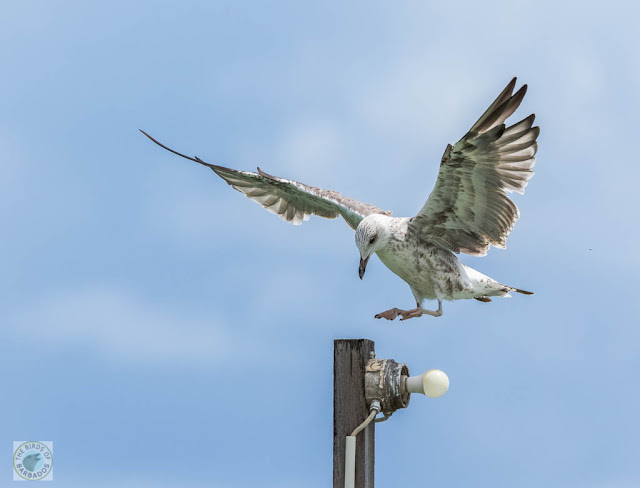Since 2019, the birders of the island stepped up plans for a return to Bird Rock, one of the few nesting colonies of Audubon Shearwaters (Puffinus lherminieri) in the Caribbean. (see The Journey to Bird Rock - parts 1,2 ) The last time data, anecdotal or otherwise, was taken at this location was over 20 years ago and there was a need to update the status of the roost. One factor that hindered data collection was that these birds are most active around the colony at night, preferably moonless dark nights, and with the main observation point being only accessible through a gully, a hike that can be trying during the day and daring at night, you can understand the drought of records.
In 2019 the discovery of a better vantage point made regular observation
possible (see The
Journey to Bird Rock 2 ) but before we were able to visit the site COVID-19
closed the island down.
 |
| The view of Bird Rock from the new vantage point |
At a few minutes to 7pm Mike saw the first bird, then we saw another and
another as the birds slowly arrived, with some even calling as they flew to and from roosting. We recorded the 100th sighting around 7:25 and then the arrivals sped up.
Two hundred sightings by 7:36, 300 by 7:45, 350 at 7:49, 400 – by 7:55, and 451
was our last tally at 8pm.
Although this count was anecdotal, it proved that this 300-year-old Audubon Shearwaters
colony is still very much active and striving.
I would love to see this very important and unique site protected by law and an in-depth study done on the ongoing health and status of the colony. The naturalist Colonel Henry W Feilden collected seven eggs for a Bird Rock on March 22, 1889, and three chicks on May 9th, 1888, since then I found no other records of any studies done at Bird Rock. One thing is for sure, with easier access to this new vantage point, records of this locally breeding bird, the Audubon Shearwater, will be a yearly norm, not a 20-year project.
Stay safe and enjoy your birding.




































